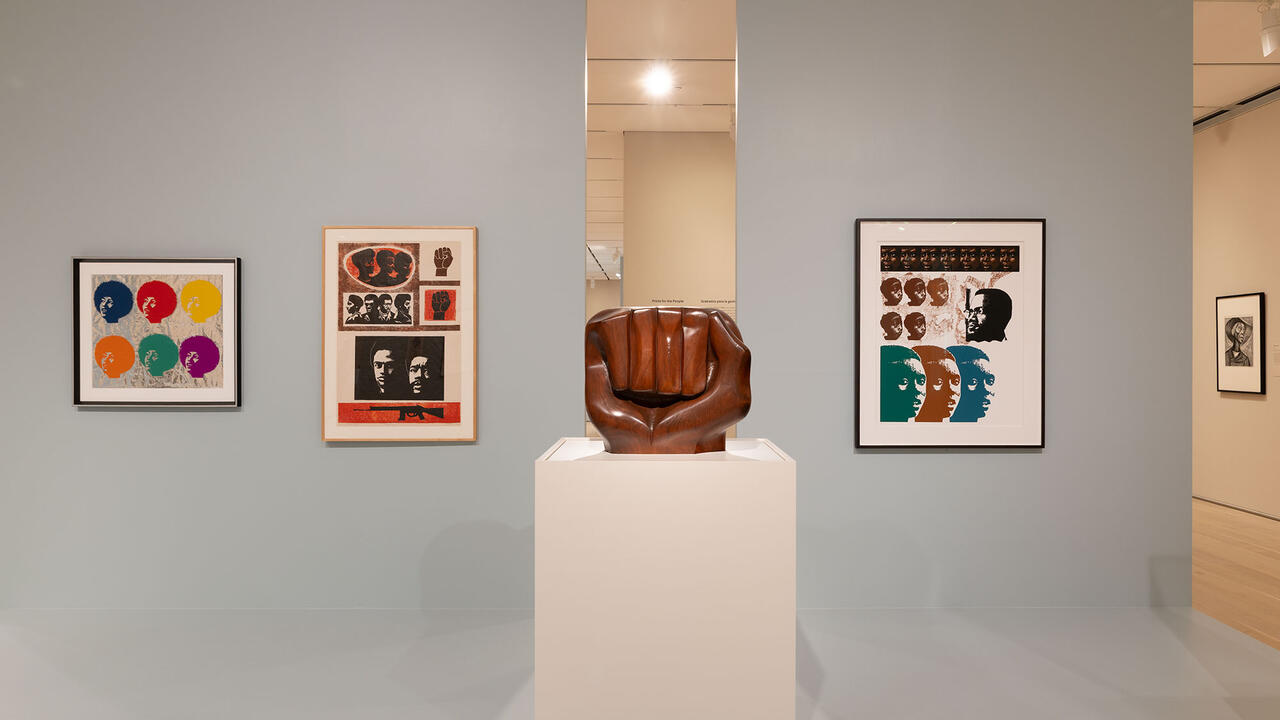Derrick Adams
Rhona Hoffman Gallery, Chicago, USA
Rhona Hoffman Gallery, Chicago, USA

In 1970, Gil Scott-Heron promised us that The Revolution Will Not Be Televised, but these days it’s hard to imagine that could be true. The Women’s March on YouTube, the Black Lives Matter Twitter account, the Syrian War on Facebook Live: revolution in its many forms is streamed, replayed and meme-ified.
The colourful collages in Derrick Adams’s series ‘Live and in Color’ capture a revolution in representation: the period between the 1970s and ‘90s when primetime television began to reflect, in small part, the vibrant diversity of the US. From The Jeffersons (1975–85) to The Fresh Prince of Bel-Air (1990–96), black lead characters proliferated on television; though often in roles defined by cultural stereotype, their presence was a marked departure from the white-bread fantasy of 1950s sitcoms like Leave it to Beaver. In the comedy world, where parody of those stereotypes and other forms of direct racial commentary were more acceptable to mainstream audiences, African-Americans dominated, from stand-up stars like Richard Pryor to comedic film actors such as Eddie Murphy. These famous funny men were the models for Adams’s series, its title borrowed from In Living Color, the 1990s sketch comedy show that launched the careers of Keenan and Damon Wayans. In ‘Tell Me Something Good’ at Rhona Hoffman Gallery, there are plenty of women too: a figure resembling Whoopi Goldberg in Say It Loud (all works 2016–17) and a female vocalist – perhaps Beyoncé – alongside Kanye West in Mississippi Goddamn, named for Nina Simone’s famous ballad about Southern racism. Could Simone be the figure with an elegant afro and dangling earrings, fuzzy with static, in Fight or Flight? Could the flat-top haircut in Coming Through to You be Will Smith’s in The Fresh Prince of Bel-Air, and the regal woman in a Zulu isicholo his character’s Aunt Viv? And who, exactly, is the dashiki-clad figure proffering bright green and blue bottles of soda pop (or cleaning solution?), infomercial-style, in Yes, Please, Thank You?

Adams has rendered these TV icons in his now-signature patchwork form of mixed-media collage, with colourfully printed fabric scraps and painted paper and cardboard set in fake laminate frames, adorned with the black and silver dials of antique cathode-ray television sets. He’s borrowed his palette from the colour bars used by the Society of Motion Picture and Television Engineers (SMPTE) to calibrate the colour-balance of analogue transmissions according to regulatory standards. (Today, the SMPTE system is only used in the Philippines, Japan, South Korea and a few other Asian Pacific nations, now that digital conversion has become the norm.) The graphic is perhaps more recognizable as the National Emergency Alert System broadcast test, which appears periodically on US cable televisions accompanied by a sound like an internet dial-up tone, another relic of the era of radio communication. SMPTE bars remind us that TV flicker is real, material; in Adams’s work, their quotation recalls with nostalgia an era when the science of television was still a source of wonder.

Yellow, cyan, magenta, green: Adams uses every colour but black to shade his figures’ skin. Mixed together, these colours might actually produce a tone that imitates life; joined like puzzle pieces, they are a kind of character metaphor, a reflection of the vibrancy
of black culture.
We might be living in a golden age of television, and Moonlight may have just won the Oscar for Best Picture, but if the recent racial unrest in the US proves anything, it’s that the issue of representation is far from settled. Black actors still lack opportunity, and Hollywood is still without many black power brokers. Entertainment media is all too often a distraction from the real politics of the street. Gil Scott-Heron was right: the revolution will not be televised, it will be live. Until that real-time event occurs, we can take comfort in Derrick Adams’s delectably nostalgic collages, reminders of the power even fictive role models can have in encouraging everyday people to fight for real change.
Main image: Derrick Adams, Coming Through To You (detail), 2016-17, 121 x 182 cm. Courtesy: Rhona Hoffman Gallery, Chicago























